
Home - Search - Browse - Alphabetic Index: 0- 1- 2- 3- 4- 5- 6- 7- 8- 9
A- B- C- D- E- F- G- H- I- J- K- L- M- N- O- P- Q- R- S- T- U- V- W- X- Y- Z
The Year in Space - 2005
The Year in Space - 2005
Last year we said "...the darkest hour is always before the dawn..." and so it came to pass. 2005 may have marked a turning point in the exploration and exploitation of space.
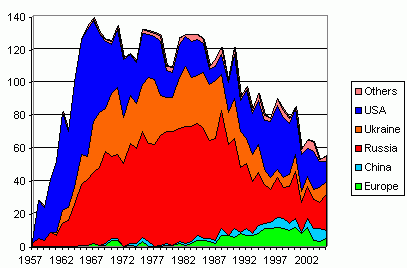 | Launches to orbit reversed the downward trend for the first time in 15 years. Russia could (and did) claim the largest number of launches to orbit in 2005, but this dominance was abetted by the collapse of the American launch rate (and diminished by the fact that all three launch vehicle failures of the year were Russian). The only first-generation American launch vehicle still flying by the end of the year was the Delta 7000 series. The classic Atlas and Titan launch vehicle lineages both flew for the last time in 2005. With the Shuttle essentially grounded, America was dependent on the EELV Delta IV Medium, Delta IV Heavy and Atlas V vehicles, which have proved costly and commercially unpopular. The Ukraine continued to cash in with launches of its Zenit-3SL medium-lift booster as well as converted surplus ICBM's. Europe, which had earlier retired the economical Ariane in favour of the more costly Ariane 5 saw its launch rate blip up, with the infant mortality problems of the Ariane 5 design seemingly behind it. |
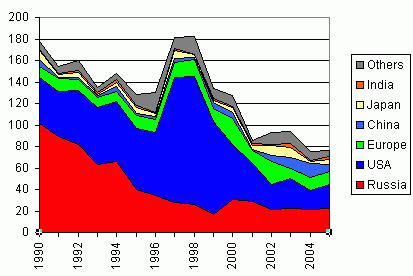 | Even with the shuttle nearly grounded and Ariane 5 just returning to service, satellites launched toward orbit increased slightly, especially commercial launches of communications satellites. More importantly, the industry seemed to have reached a new equilibrium after the over-expansion during the dot-com and MEOsat frenzy of the late 1990's. Following a still in-process industry consolidation, a mature mix of geosynchronous comsats has emerged. Miniaturization allowed a new generation of smaller satellites (using Orbital's Star bus) that could be launched singly by medium launch vehicles (Soyuz FG). Meanwhile two of the traditional sats or one of the new heavyweights (versions of the HS-702, Eurostar 3000, and FS-1300) could be lofted in a single launch of the new Ariane 5 EC-A or Zenit-3SL. These met the needs of users in a mature market that did not foresee expansion so much as replacement of existing capability with more capable satellites with far greater bandwidth. |
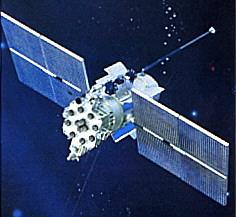 | The navigation satellite situation was problematic. The US Air Force was not paying enough attention and money on replenishing and maintaining the existing GPS Block 2R constellation, while its next-generation GPS Block 3 was facing delays and spiraling costs. The Europeans had the first experimental launch in support of their alternative Galileo Navsat system, only to stumble right out of the blocks with skyrocketing costs, delays, and interminable arguments over work share. Galileo looked not only to take longer and cost much more than expected, but also to suck the life blood out of a host of other European space projects. Chinese plans to augment their unique Beidou geosynchronous military navigation satellite system seemed stalled - expected launches of operational versions did not materialize. Finally, for the third year in a row, the Russians made a December launch of three satellites to replenish their spotty Glonass constellation, and announced plans for further launches that would provide a continuous minimum independent capability. |
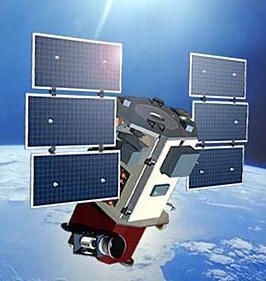 | The voracious requirements of the US Army for immediate imaging to support its various wars brought financial security to the nascent civilian earth imaging industry. Google Earth began the proletarization of space imaging and pointed the way to the seamless integration of satellite data into the WorldWideWeb. The news media, thanks to Google Earth, finally seemed comfortable in accessing space product. Whereas before 9-11-2001 civilian imaging satellites looked like a bad bet, their future now seems secure. Orders were placed for development and launch of new civilian imagers with better resolution and multi-spectral capabilities. The low cost of electronic sensors meant that a multitude of experimental satellites with earth imaging instruments were lofted for universities and research institutes. |
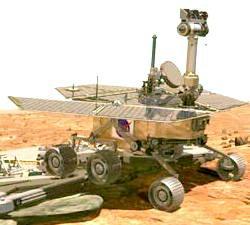 | Robotic planetary exploration reached a riotous zenith not seen for years. Three Mars orbiters (Mars Global Surveyor, Mars Odyssey, Mars Express and two MER rovers were in service, providing a deluge of data and striking images of the planet most like earth. Huygens landed on Titan, sending back images during descent of seashores on oceans of liquid methane, covered in methane snow. The landscape at the landing point was unfortunately highly undistinguished - no Bonestellian views of stone arches with a crescent Saturn in the background. From a taxpayers point of view, it was just another expensive mission that may have just as well have landed near the Barstow off-ramp on the interstate to Las Vegas. The Saturn orbiter Cassini more than compensated with awe-inspiring images of Saturn's rings and moons that out-Bonestelled Chesely... |
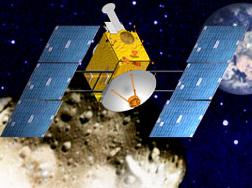 | And then there was Hayabusa, the little spacecraft that almost could. A Japanese team tried, via frustrating time-delay remote control, to scoop up a bit of a rotating asteroid and return it to earth. Multiple system failures meant that the ion-drive robot may not return the sample, but the little-publicized images were entrancing. The suspenseful (albeit earthbound) explorations of the Hayabusa mission team were really exciting exploration of the first rank. |
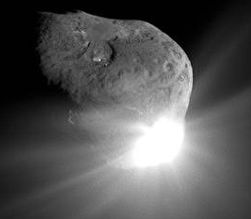 | NASA demonstrated what sophisticated artificial intelligence could do in the resounding success of the Deep Impact mission, which photographed and analyzed the enormous plume ejected when the spacecraft's impacter homed itself to a collision with a comet at 37,000 kph. After having lost its way a bit with a string of failures, NASA's planetary science teams and contractors seem to have regained the right balance of project control, system redundancy, technological maturity, and cost to ensure successful missions. |
 | The Mars orbiters and rovers sent back ever more data on the presence, and sometimes the lack, of water and ice on Mars. No simple answers were obtained - instead, the more that was learned, the more complex the reality of Mars became. It is indeed regrettable that NASA could not follow up the tremendous success of the Spirit and Opportunity MER rovers with fleets of copies. This would capitalize on a proven design, operated by teams that now have tremendous experience in its workings. Instead NASA's next rover will be an expensive nuclear-powered new concept, for which only a single launch can be afforded. The first lesson of planetary exploration - putting your eggs all in one expensive basket can only lead to disappointment - is being ignored. |
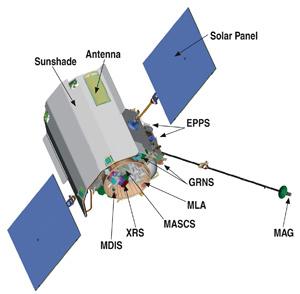 | During the year new probes set off for Mars, Venus, and the moon. Messenger was on its way to Mercury. The first launch to Pluto was being prepared at year's end. Chinese, Indian, Japanese, and European probes to the moon and Mercury are in development. This continued activity promises ever more intriguing images and discoveries in the years ahead. |
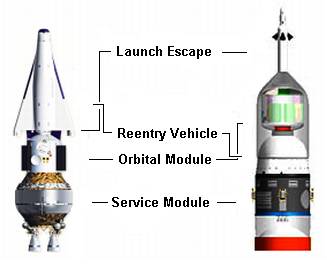 | NASA's plan for an Apollo-derived CEV spacecraft launched by shuttle-derived hardware has been much derided as a step way, way backwards. But, even though it will be much more expensive than it has to be, it still should be much cheaper than the alternative - continued operation of the shuttle and the ISS. After 35 years of trying to implement programs that US taxpayers simply will not fund, NASA finally is turning to a more limited human spaceflight program that can be accomplished within a budget that is under the political background noise level. The pity is that NASA ever talked the President and Congress into ever funding the shuttle and space station in the first place. After forty years, they will be returning to the kind of spacecraft, launch vehicles, and technology that were in place in 1968. All of the money spent over the last 40 years in developing and operating the space shuttle and space station could have instead been spent on manned space operations using Apollo-Saturn hardware. Lunar bases would have been established in the 1970's and manned Mars expeditions would have reached the red planet long ago. Instead, these projects are now on the same relative schedule, moved forty years to the right. Half a human lifetime lost. But at least the new realism may allow human expansion off the planet to finally beginů |
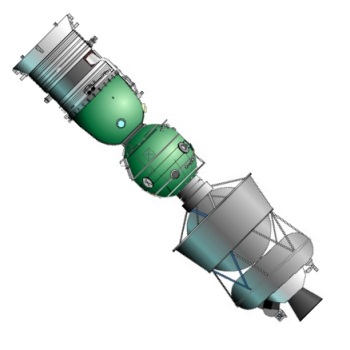 | In Russia, efforts to find a partner for its new manned Kliper spacecraft failed. Development using only Russian funding is highly questionable. But at least the Russians still have a manned lunar-capable spacecraft in production that actually works. (the Soyuz TMA / DSE-Alpha - and they will even sell you a trip around the moon!). European funding of a Soyuz launch pad in Kourou, fresh national funding for the civilian and military space programs, and payments for commercial launches using Proton, Soyuz, and retired ICBM's have given the industry new sources of cash. Perhaps most importantly, the rational reorganization of the sprawling and barely operating space industry is finally underway. 15 years after the end of the cold war, Russia, like NASA, is finally facing up to reality. |
 | The situation regarding Russia's military space infrastructure was murky. The renewed effort to replenish its crumbling networks of military communications and navigation satellites continued. But in terms of space reconnaissance, Cosmos 2415 cartographic satellite made a lonely 44 day mission to update strategic targeting data, the first such mission in five years. Funds for a new generation of military satellites to replace these obsolete designs from the 1970's were evidently not available or in short supply... |
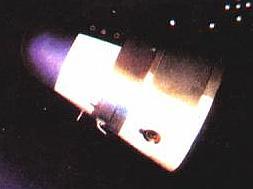 | China's space operations declined after a high tempo in the previous year. The recoverable-capsule film reconnaissance satellite program continued with two late-summer launches, mirroring 2004 - perhaps part of a new program to annually update strategic targeting data with paired wide-survey/close-look spacecraft. The somewhat mysterious SJ-7, launched into a sun-synchronous orbit in July, may have represented the first of a new class of electronic military optical surveillance satellites. But other announced space missions did not take place. Evidently cost and technical problems were bedeviling development of new military navigation and communications satellite constellations. |
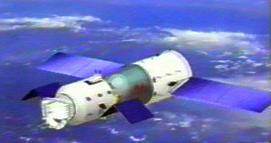 | China's safe and successful but very slow manned space program continued with the launch of Shenzhou 6. The flight was primarily for very successful internal propaganda purposes, and secondarily for military objectives. Announced plans made it clear that the program would continue at a very slow pace. Externally its propaganda value seemed minimal, but China did have, outside of Russia, the only other in-production and proven manned spacecraft in the world. |
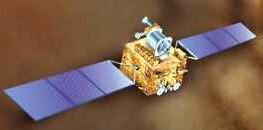 | India's made only a single launch in 2005, but it inaugurated a second launch pad at Sriharikota. Plans were in place to launch its first planetary probe toward the moon by 2008. It was clear that it India had comfortably retained its place at the table of autonomous spacefaring nations. |
 | Japan got its H-2A and M-V launch vehicles back into successful service after earlier failures. Development of the H-2B heavier-lift vehicle, designed to orbit the HTV space tug, was given new urgency by NASA's uncertain commitment to completing the International Space Station. The H-2B might be the only way to get Japan's long-delayed JEMS ISS space station modules into orbit... |
 | Other new spacefaring nations faced continued delays. The Sinah-1 (Mesbah-2?) Iranian technology satellite was lofted by a Russian booster. But the expected launch into orbit using an Iranian Shahab SLV launch vehicle did not take place, and Iran was reportedly concentrating on a crash program to perfect its Shahab 3 IRBM and its accompanying nuclear warhead. There was little news regarding South Korea's work on an indigenous spaceport and launch capability. North Korea's program seemed to be on ice. |
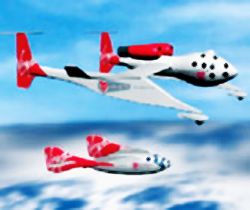 | Most encouragingly, several private ventures went ahead with serious efforts at purely commercial launch capability and manned spacecraft. US government unhelpfulness and technical delays kept deferring the first launch attempt of the private Falcon I booster, until it slid into 2006. Richard Branson announced construction of a spaceport in New Mexico that would be used to loft space tourists into cannonball trajectories through space aboard the SpaceShipTwo as early as 2010 - at $ 200,000 a ticket. This was a final harbinger of what will really get humankind off the planet - private enterprise. |
 | Perhaps 2005 will be seen as the year when the corner was turned, when the last vestiges of the Cold War and the Space Race of the 20th Century were abandoned. The 21st Century in space, as demonstrated in 2005, may consist of a modest mix of mature commercial exploitation and limited manned and robotic exploration. Reflecting geopolitical reality as the century continues, a race between two primary spacefaring nations will be replaced by modest efforts by a half-dozen nations using 20th Century rocket technology for access to space. |
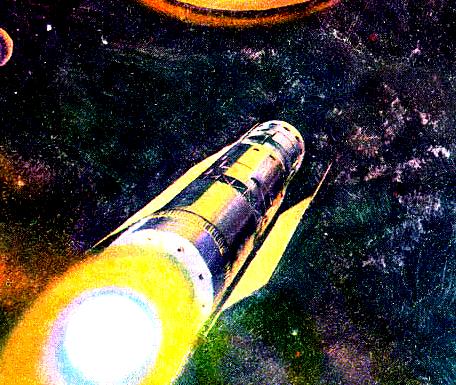 | The successful MER Mars rover and Deep Impact missions show that robots with ever-improving artificial intelligence will make manned exploration of the moon and planets superfluous. The only reason for continued manned spaceflight is to keep the dream of human settlement off the earth alive. Until a revolutionary form of transportation to space becomes available (high-thrust propulsion via beamed energy or space elevators) manned colonization will not be economically palatable. But the announcement of yet another earth-crossing asteroid with the potential to hit the earth in 2015 reinforces the need for such colonization. Some day the earth's number will be up, and only humans residing elsewhere will keep all that we have learned immortal. |
Back to top of page
Home - Search - Browse - Alphabetic Index: 0- 1- 2- 3- 4- 5- 6- 7- 8- 9
A- B- C- D- E- F- G- H- I- J- K- L- M- N- O- P- Q- R- S- T- U- V- W- X- Y- Z
© 1997-2019 Mark Wade - Contact
© / Conditions for Use